Flawed. Rushed. Out of Touch.
In less than two years, the Victorian Government has driven the most radical redrafting of a land use planning system in Australia’s history, passing highly significant amendments without following statutory process. These authoritarian and undemocratic changes remove residents and local government from planning decisions.
One of these amendments gave rise to the Government’s Activity Centre Program. Designed in close consultation with the property industry and special interest groups with vested interest in development, the program identifies 60 activity centres across Melbourne to transform into high and medium rise hubs by enabling and incentivising the construction of mainly medium and high-density apartments.
The program itself has been heavily criticised by planning and urban design experts (like Charter 29) who have labelled it destructive and unnecessary, proved its underlying design assumptions false, and have raised serious concerns in relation to its destructive impact on heritage, local character and amenity across much of Melbourne.


Developers First. Communities Last.
Another key critique of the Government’s program was their failure to properly inform and consult the public on its design. This disregard for community views and feedback has continued into implementation of the program in individual activity centres, including the Thornbury Activity Centre.
From generic communications lacking explicit and meaningful information, hosting drop-in centres outside the activity centre, burying draft activity centre maps behind layers of clicks, designing consultation surveys with biased questions and severe character restrictions, and a Community Reference Group process that was rushed and restrictive – it is evident that the Government is intent on minimising community voice and public feedback.
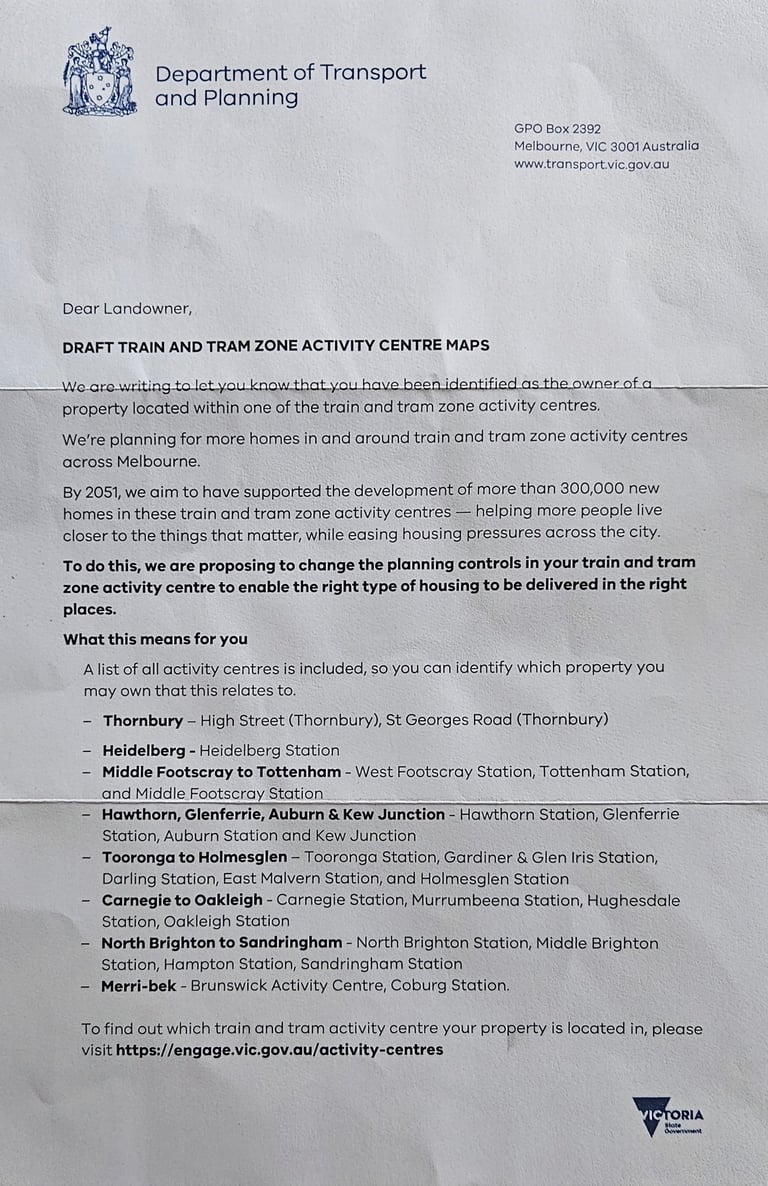

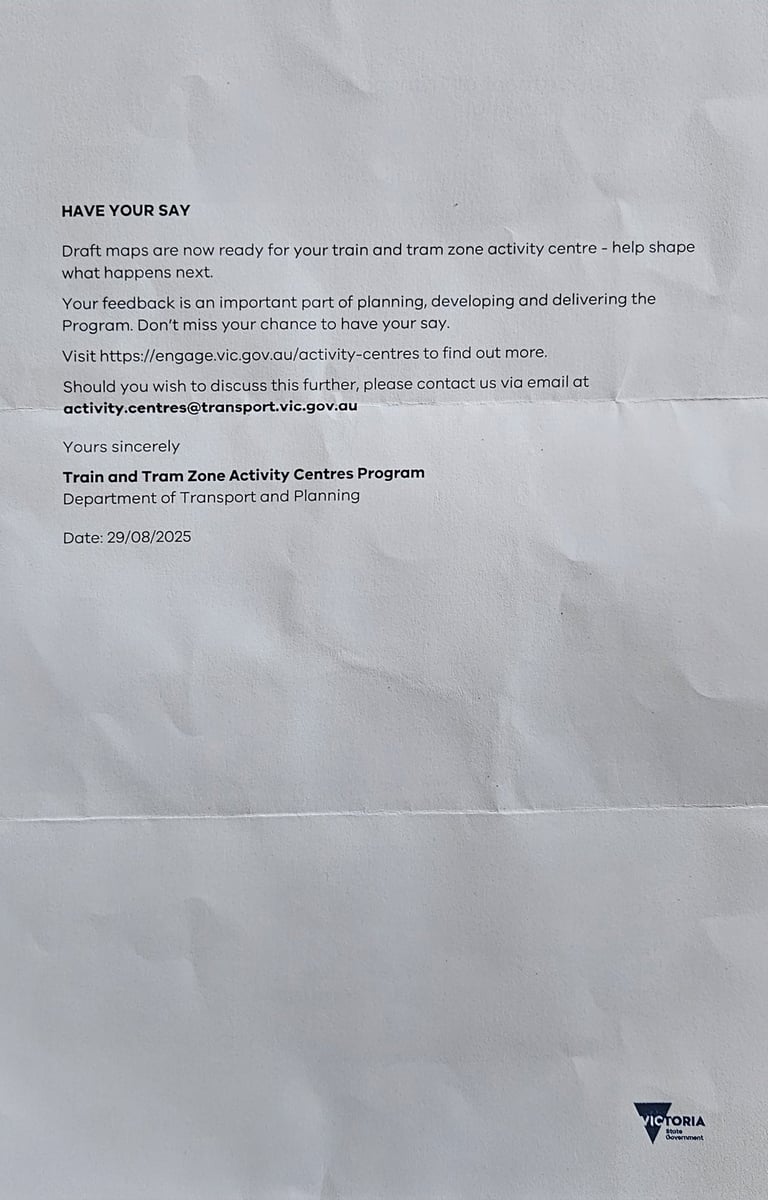

An example of the Government’s so-called “community engagement.” This letter makes no mention of the applicable Activity Centre, no reference to the Activity Centre boundaries, no explanation of the applicable catchments (or any catchments), and no discussion of the impacts residents actually face. It’s a generic, copy-and-paste communication sent across Melbourne — not a genuine attempt to inform or consult the people who live here.
Even when the community does manage to voice their opinion, they are disregarded. This is evidenced by the Government’s complete failure to incorporate key recommendations from phase 1 consultation and the Community Reference Group process into their draft activity centre plans.
The problem is clear – Government is not listening to community and is seeking to manufacture consent for their draft plans by under informing and limiting engagement.
Thornbury: A Case Study of Government Deception
Thornbury has become the perfect case study for how the Government’s Activity Centre Program plays out in practice. From the outset, residents were promised transparency, genuine consultation and plans shaped by local context. What followed was the opposite — a process defined by poor communication, vague engagement, and plans that ignore the very feedback they were built on.
Thornbury's Voice Was Clear...
There was no ambiguity in the feedback provided during Phase 1 or through the Community Reference Group (CRG). The message from Thornbury residents was clear and consistent: protect our residential streets, retain High Street’s village-like scale, and direct growth to St Georges Road where it makes sense. Yet despite this unity of voice, the Government’s draft plans ignore every one of these priorities. The consultation process didn’t fail because the community was divided, it failed because the Government chose not to listen.
The following snap shots are feedback from Phase 1 consultation and the CRG as written in the Government’s own summary report.
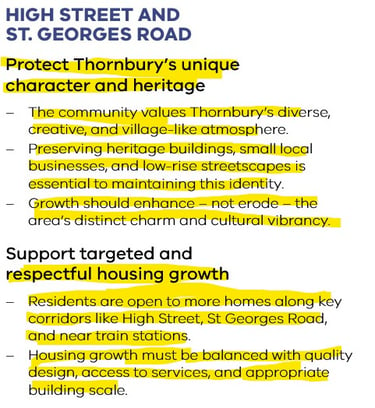

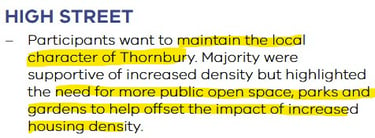

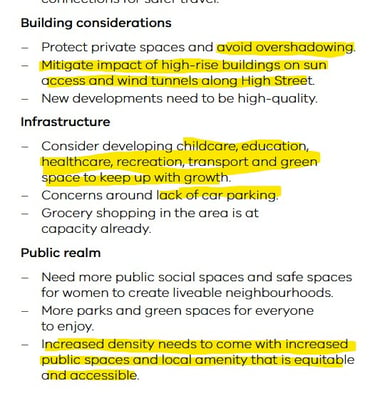

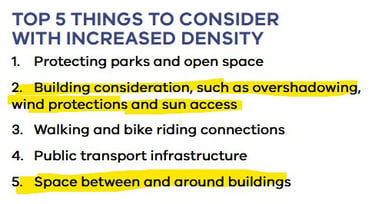
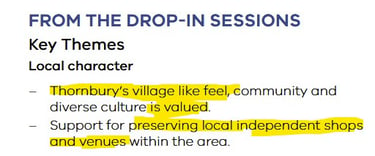








From Engagement to Betrayal: How the Plan Went Wrong
Despite clear, consistent feedback through both Phase 1 and the Community Reference Group, the Government’s draft plans move in the exact opposite direction. Instead of protecting residential streets and retaining High Street’s village-like character, the new model expands the inner catchment deep into quiet neighbourhoods and allows 8 - 12 storey buildings on High Street, planning for density exactly where the community explicitly said it does not belong.
The maps tell the story. Areas that residents fought to protect have been up-zoned, while genuine renewal opportunities along St Georges Road remain largely untouched. It’s not consultation — it’s inversion: the feedback was heard, recorded, and then ignored.
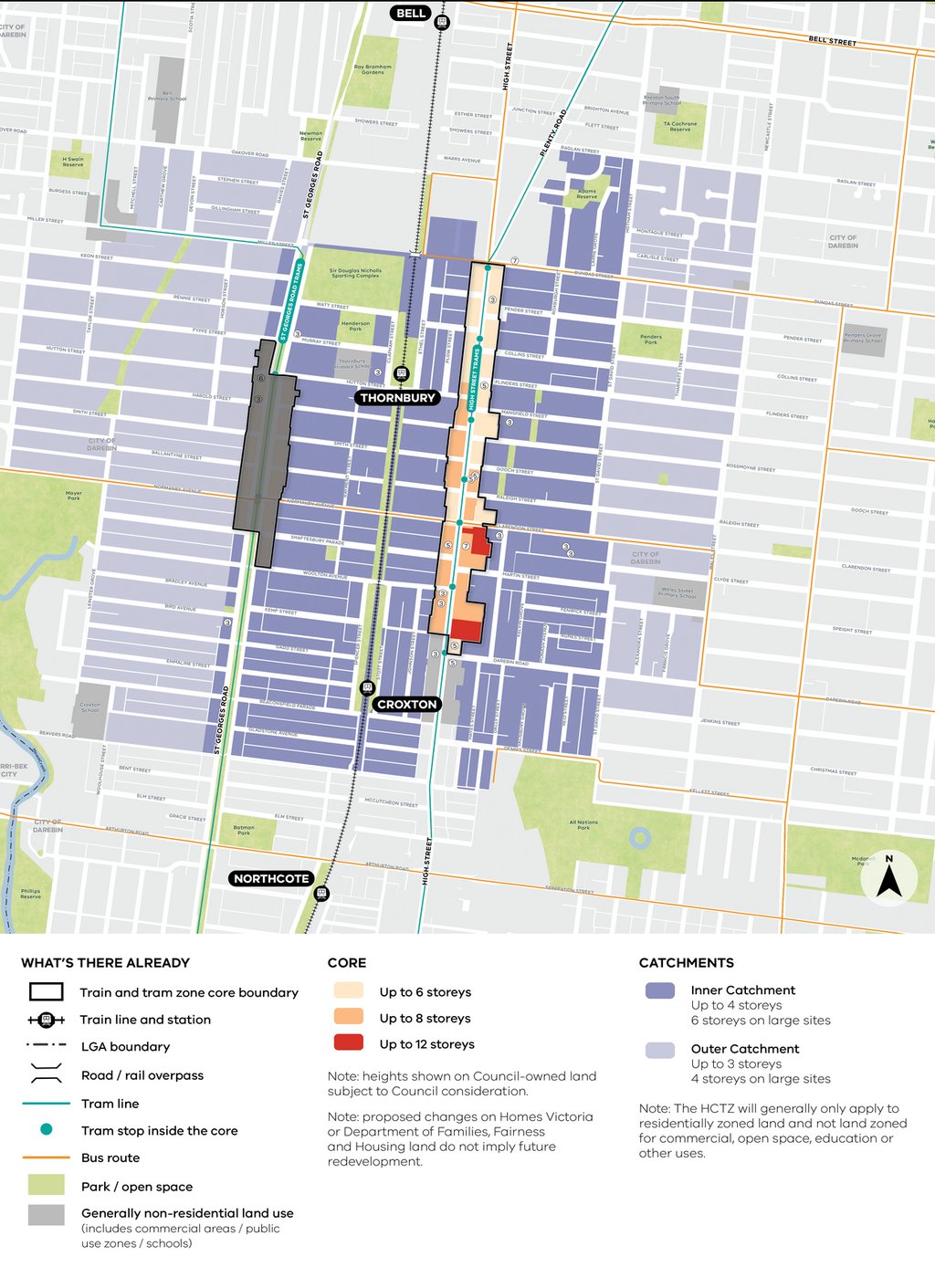

It's Not Just Feedback That Was Ignored...
The Government didn’t just ignore community feedback — it also overlooked the evidence. Thornbury’s topography, flood risks, transport constraints, heritage and historic character, and infrastructure capacity were all apparently ignored in the draft plan. Instead of responding to the realities of the suburb, the plan applies a generic model that bears little resemblance to how Thornbury actually functions. The result is a proposal that defies both logic and local context.
When Council Should Have Stood With Its Community
Darebin Council had the opportunity to respond in its own right — to advocate for Thornbury, reflect local voices, and push back on a flawed State plan.
Instead, it failed the community it represents. Rather than championing resident concerns, it endorsed a bureaucratic response that put process before people and politics before place.
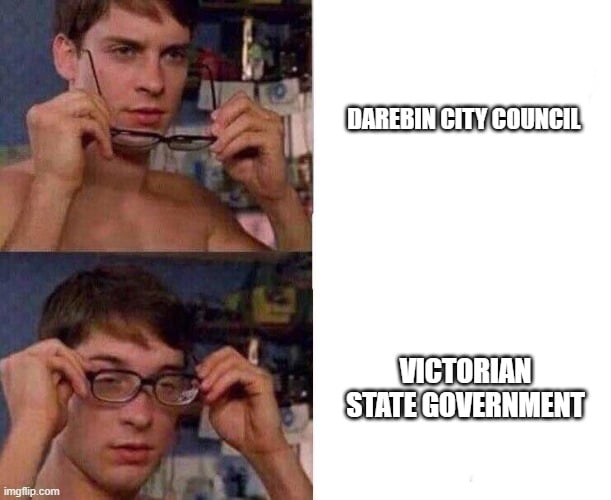

A Rushed Process With No Real Engagement
The Council’s process was rushed, opaque and entirely detached from the community.
Its draft submission, a document carrying significant weight with the State Government, was released only days before the Council vote. Residents had no real time to review or respond, and the councillor representing half the Activity Centre was on leave throughout.
Despite knowing how important its submission would be, Council undertook no community engagement whatsoever to inform it. Detailed petitions, submissions and correspondence from Fair Growth Thornbury and others were ignored.
Instead, Council substituted the voice of its community with the opinions of its own bureaucrats, many of whom don’t live within the Activity Centre, or even within the Darebin area, and will never live with the consequences of the decisions they made.
It was a familiar story, just like the car-parking fiasco of 2019, when community voices were again dismissed, and positions of the bureaucrats advanced.
A Submission That Sold Thornbury Short
The proposal presented to Councillors to endorse was deeply flawed. It supported 8–12 storeys along High Street, ignored topography and flood risks, and proposed six-storey zoning in streets that its own Housing Strategy capped at three.
When public criticism mounted, Council claimed victory after securing a handful of largely minor edits. Vague wording stating that the Government should consult the community and conduct a street by street analysis that would have little to no impact on the State’s bulldozer approach. The only meaningful change was the reduction in heights on High Street, and still Council advocated for 10 storey buildings.
Rather than using its influence to fight for the suburb, Council legitimised a plan that erodes it.
Fair Growth Thornbury: Standing Up Where Council Wouldn’t
Where Council retreated, we continued forward.
Fair Growth Thornbury continues to advocate for Thornbury residents, engaging directly with decision-makers, presenting evidence-based alternatives, and pushing for responsible growth that delivers more homes, done better.
We will keep doing the work Council refused to do: defending Thornbury’s character, liveability and future against the State Government's flawed, rushed and out of touch plans.
Our solution? A smarter, community-led plan for Thornbury’s future — one that delivers more homes, supports growth, and protects what makes our suburb special.
Community backed
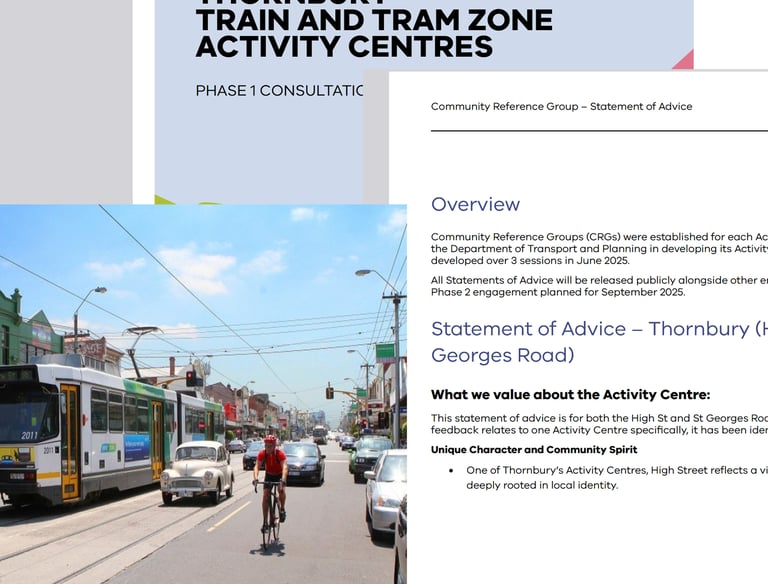

Developed from the feedback of nearly 1,000 residents across two major petitions, our plan reflects what Thornbury actually wants — fair growth that balances housing needs with local character and liveability.
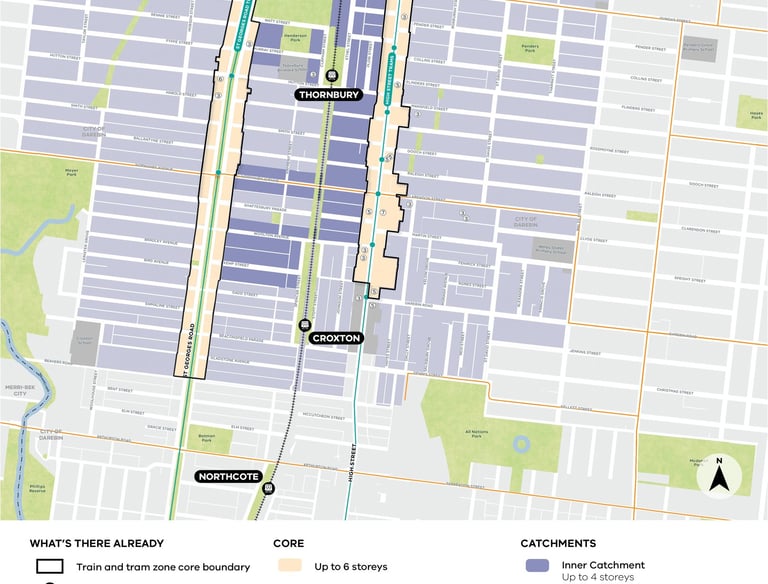

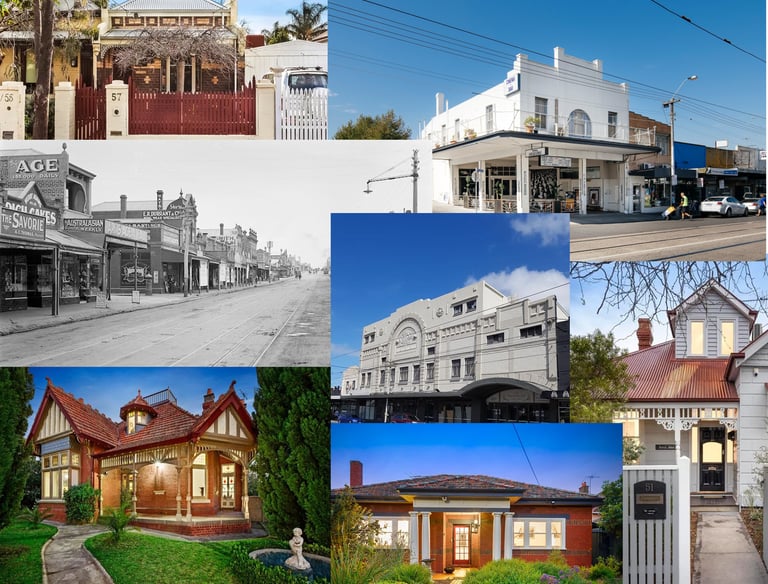

More homes
Our model directs new housing and mixed-use development to where it makes sense — along St Georges Road and transport corridors — creating genuine capacity for more homes without overwhelming our residential streets.
Every element of our proposal responds to Thornbury’s unique conditions — its topography, infrastructure, heritage and village character — ensuring growth enhances, rather than erases, what makes this place home.
Tailored for Thornbury
Contact
Get in touch:
© 2025. All rights reserved.
Fair Growth Thornbury acknowledges the Wurundjeri Woi-wurrung people of the Kulin Nation as the Traditional Custodians of the unceded lands on which we live and work. We pay our respects to Elders past, present and emerging.
